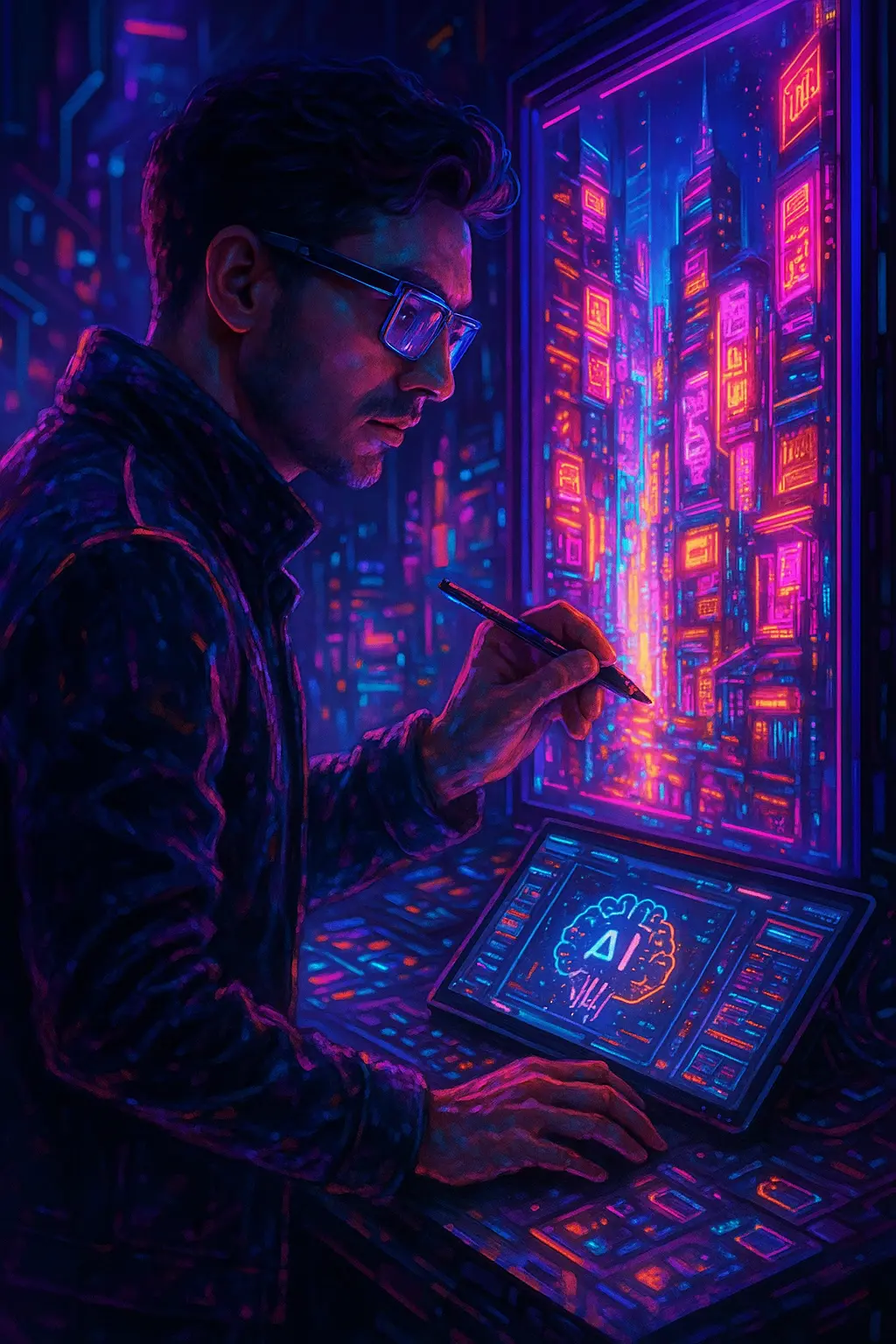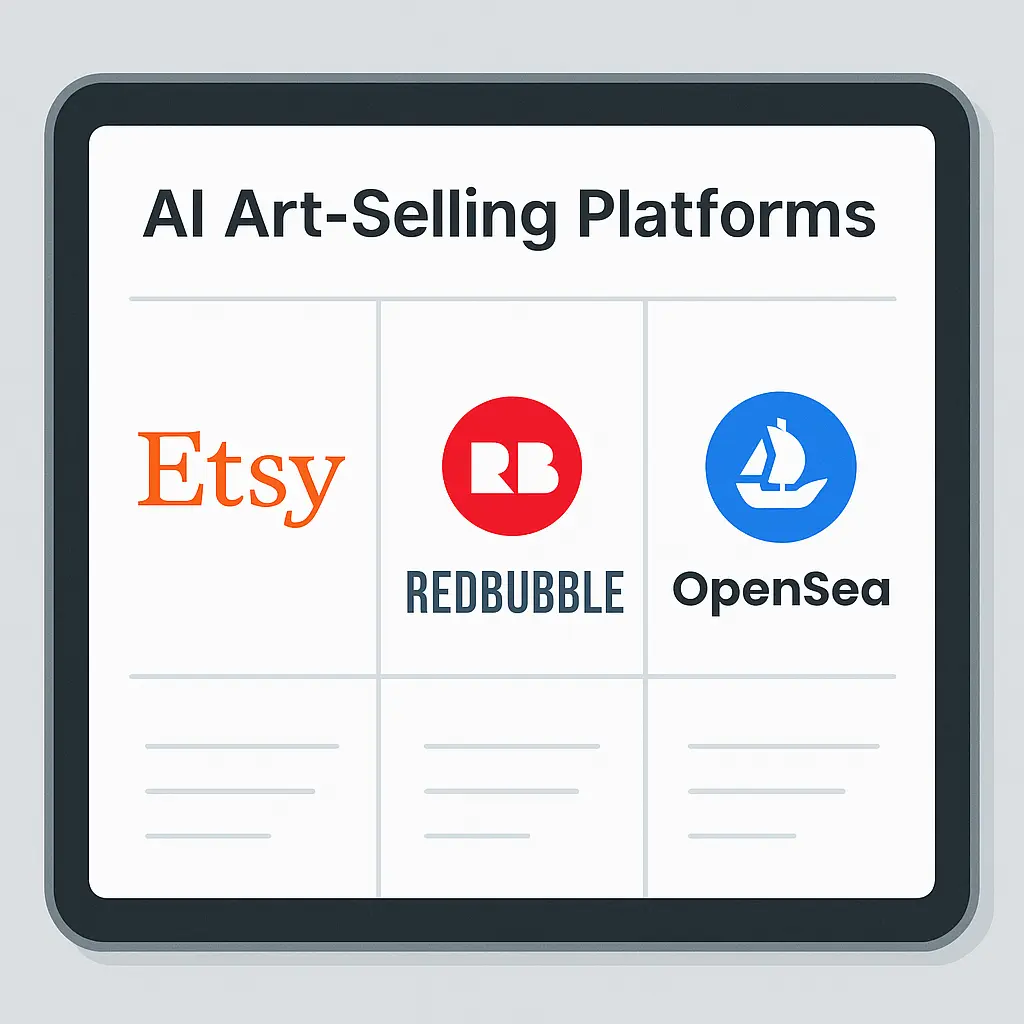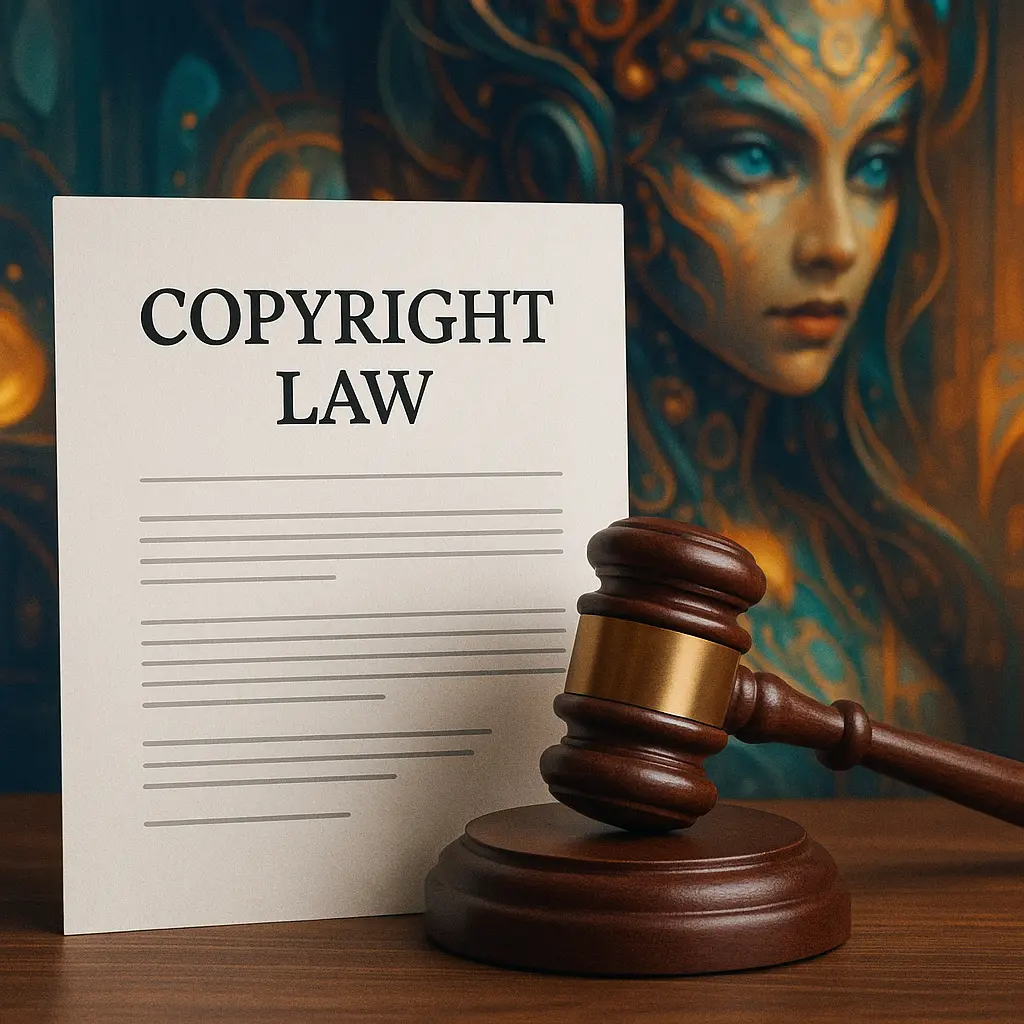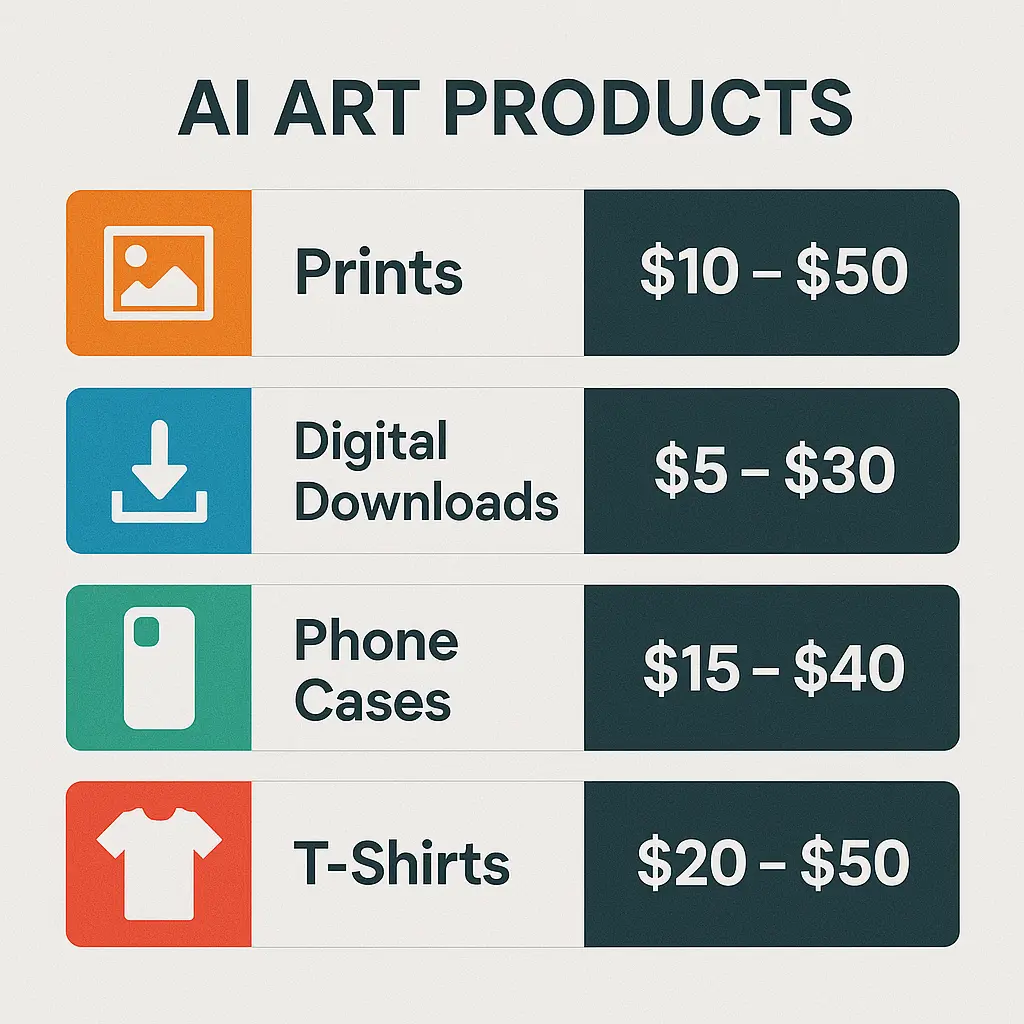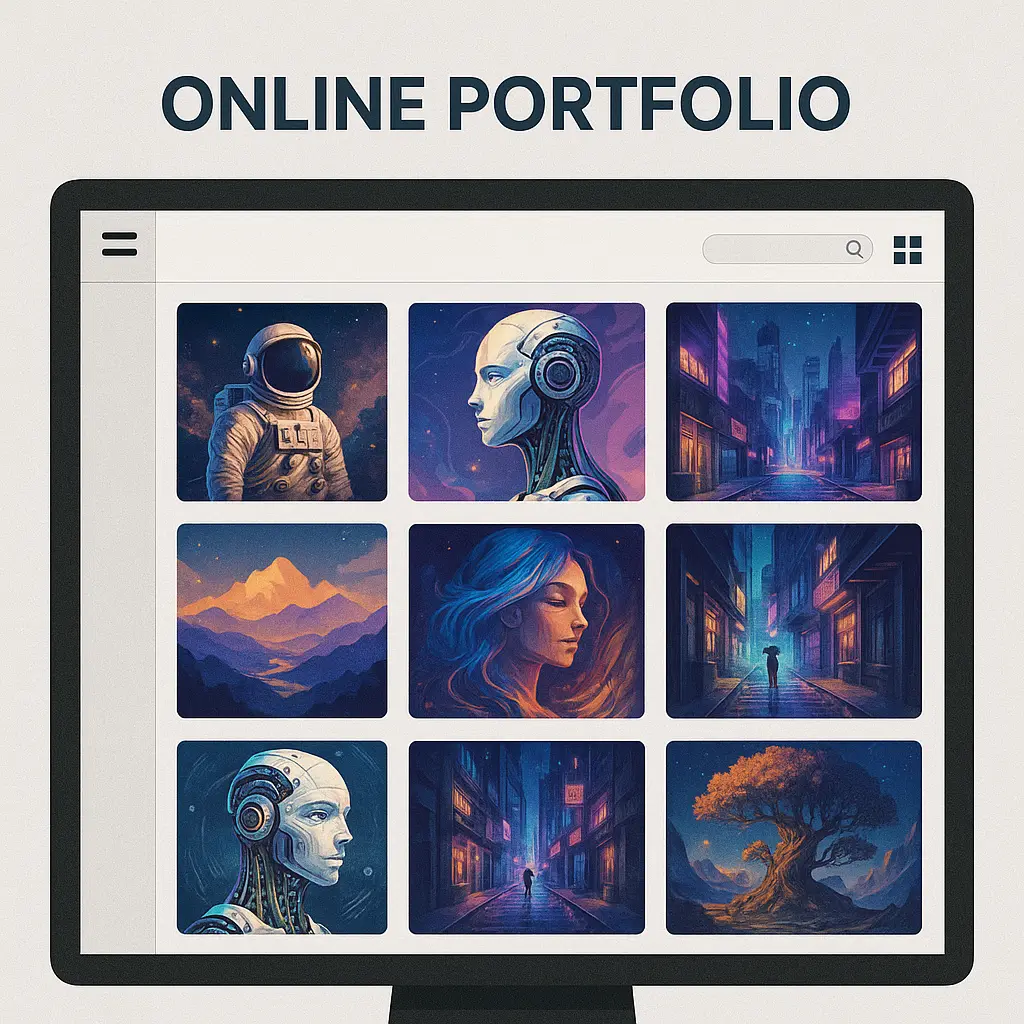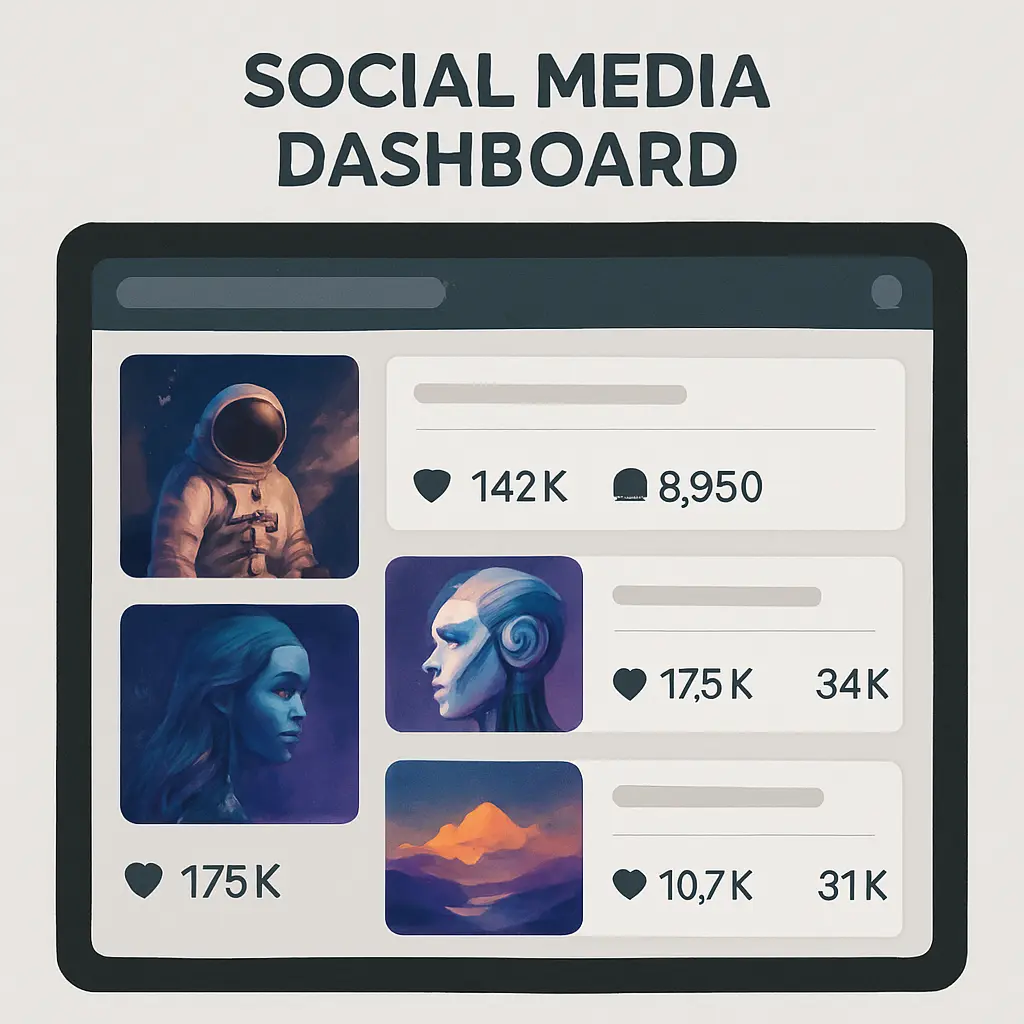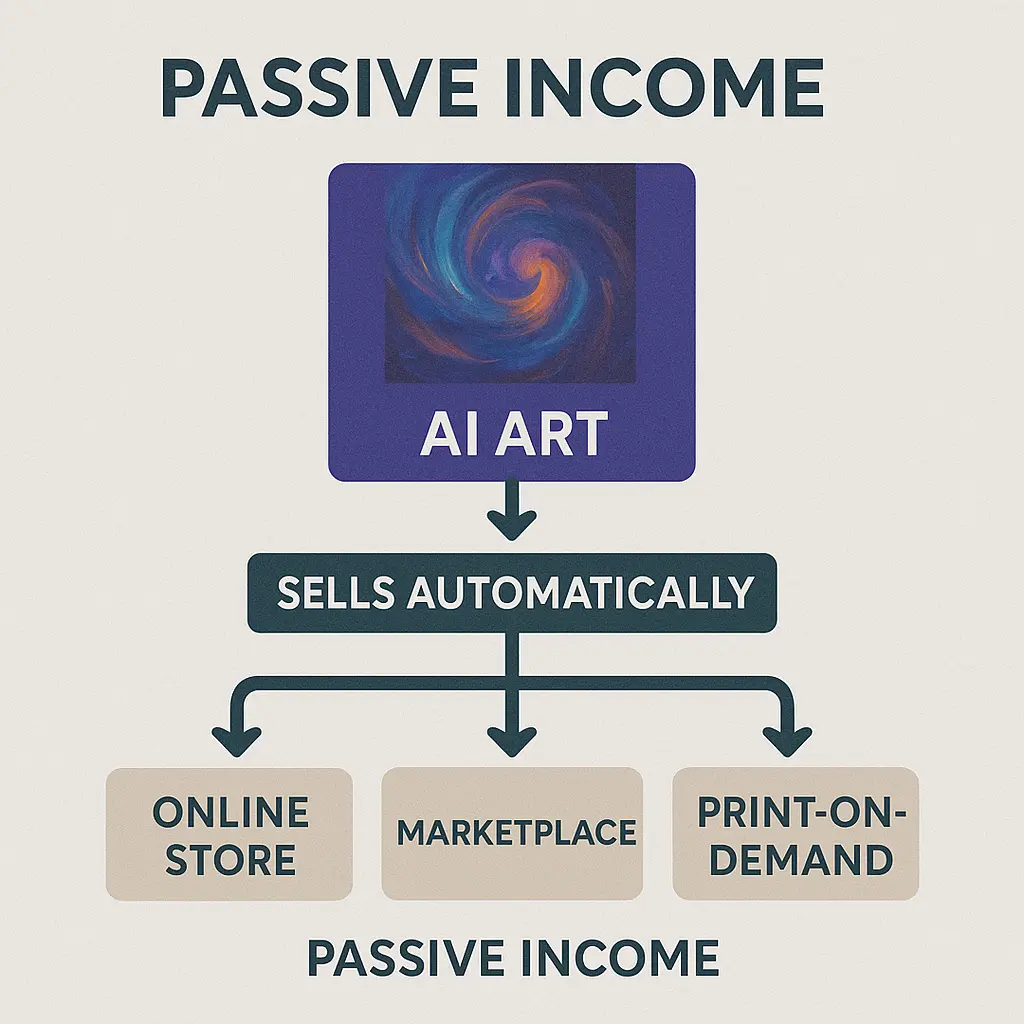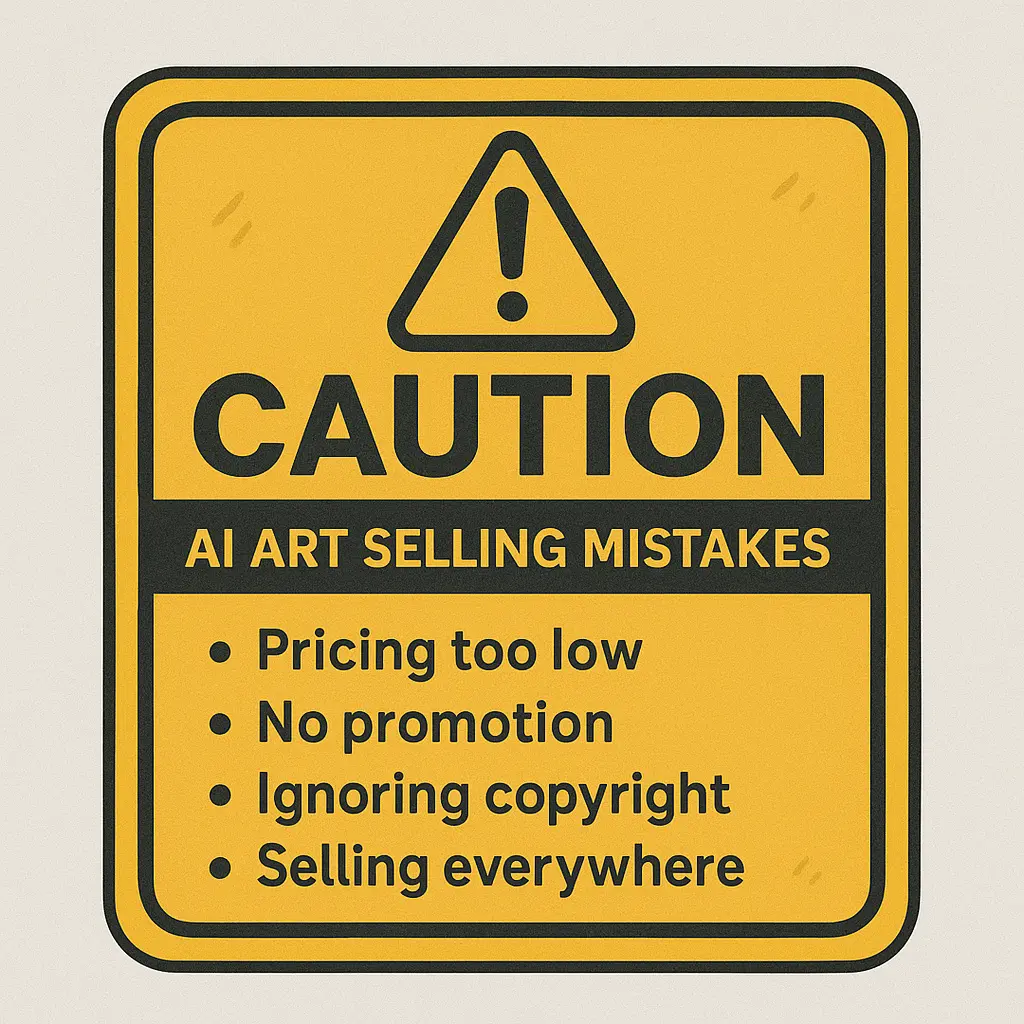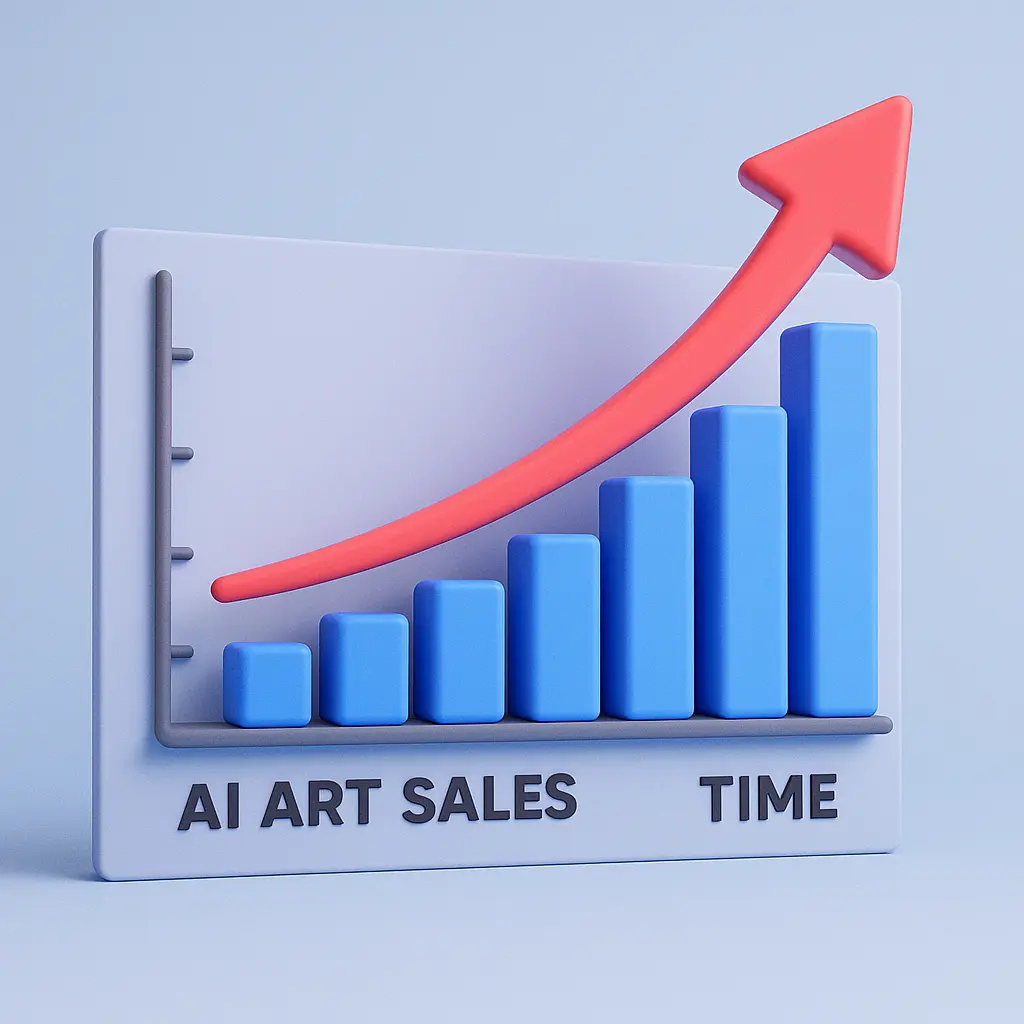How to Sell AI-Generated Art Online 2025: Best Guide
Introduction
The digital art revolution is here, and AI-generated art is at the forefront. With tools like MidJourney, DALL·E, and Stable Diffusion, anyone can create stunning artwork in seconds. But how do you make money from these works?
Selling AI-generated art online is a thriving venture. From digital downloads to NFTs and print-on-demand products, artists and entrepreneurs are making thousands—even millions—from AI art. Whether you’re a seasoned artist or a complete beginner, this guide will walk you through everything you need to know to sell AI-generated art online successfully.
In this comprehensive guide, we’ll cover:
- The best platforms to sell AI art
- Legal considerations (copyright, ethics, and AI policies)
- Pricing strategies for maximum profit
- Marketing tips to boost sales
- How to scale your AI art business
Let’s dive in!
Chapter 1: Understanding AI-Generated Art
What Is AI Art?
AI-generated art is artwork created using artificial intelligence. Instead of manually drawing or painting, artists use AI tools to generate images based on text prompts (e.g., “cyberpunk cityscape, neon lights, futuristic”).
How Does AI Art Work?
AI art generators use deep learning models trained on millions of images. When you input a text prompt, the AI analyzes patterns and generates a unique image based on its training data.
Popular AI Art Tools
- MidJourney – Best for surreal, high-quality illustrations. Requires Discord to use.
- DALL·E (by OpenAI) – Great for conceptual and commercial designs. Offers an easy-to-use web interface.
- Stable Diffusion – Open-source, highly customizable. Can be run locally for more control.
- Deep Dream Generator – Creates dream-like, abstract visuals. Good for experimental art.
Why Sell AI-Generated Art?
- Low Barrier to Entry – No traditional art skills required.
- High Demand – Digital art, NFTs, and prints are booming.
- Passive Income Potential – Sell the same artwork multiple times.
- Scalability – Generate hundreds of unique pieces quickly.
Types of AI Art You Can Sell
- Digital Prints (PNG, JPEG, SVG)
- NFTs (Unique digital collectibles)
- Print-on-Demand Products (T-shirts, mugs, posters)
- Stock Art & Licensing (For commercial use)
Chapter 2: Best Platforms to Sell AI-Generated Art Online
1. Etsy (Digital Downloads & Prints)
Why Etsy?
- Massive audience looking for unique digital art.
- Easy to set up and manage.
- Supports both digital and physical products.
How to Sell on Etsy:
- Create an Etsy seller account.
- Upload high-quality AI art (PNG, SVG, PDF).
- Optimize listings with keywords like AI-generated wall art.
- Price competitively (5–5–50 for digital downloads).
Reference: Etsy’s seller handbook
2. Redbubble & Teespring (Print-on-Demand)
Why Print-on-Demand?
- No upfront costs—products are printed and shipped only when sold.
- Wide range of products (T-shirts, posters, phone cases).
How to Sell on Redbubble:
- Upload designs in high resolution.
- Tag products with relevant keywords.
- Promote through social media.
3. OpenSea & Rarible (NFT Marketplaces)
Why NFTs?
- Potential for high-value sales.
- Blockchain ensures authenticity.
How to Sell NFTs:
- Create a crypto wallet (MetaMask).
- Mint your AI art as an NFT.
- List on OpenSea or Rarible.
4. DeviantArt & ArtStation
Best For:
- Building an artist portfolio.
- Selling high-quality digital prints.
5. Your Own Website (Shopify, Gumroad)
Benefits:
- Full control over branding and pricing.
- No marketplace fees.
Chapter 3: Legal Considerations When Selling AI Art
Copyright & Ownership
- Can You Copyright AI Art?
- U.S. Copyright Office does not protect AI-only works.
- If you modify AI art significantly, you may claim copyright.
- Ethical Concerns:
- Avoid generating art in the style of living artists without permission.
- Some AI tools scrape copyrighted images—check their policies.
AI Policies on Marketplaces
- Etsy – Allows AI art if disclosed.
- DeviantArt – Requires tagging AI-generated works.
- Redbubble – No strict restrictions yet.
How to Protect Yourself
- Add disclaimers (“AI-generated artwork”).
- Avoid using trademarked characters (Disney, Marvel).
Chapter 4: How to Price AI-Generated Art
Factors to Consider:
- Uniqueness – One-of-a-kind pieces can be priced higher.
- Market Demand – Trending styles sell better.
- Platform Fees – Etsy takes 6.5%, OpenSea 2.5%.
Pricing Strategies:
- Digital Downloads: 5–50
- Prints & Merchandise: 15–100
- NFTs: 10–10,000+ (depending on rarity)
How to Test Pricing
- Start low, then increase based on demand.
- Offer limited-time discounts to attract buyers.
Chapter 5: Creating a Strong AI Art Portfolio
Tips for a Winning Portfolio:
- Showcase Variety – Landscapes, portraits, abstract, etc.
- High-Resolution Previews – Let buyers zoom in on details.
- Tell a Story – Explain your creative process.
Best Portfolio Platforms:
- Behance (Great for exposure)
- ArtStation (Professional artists)
- Personal Website (Best for branding)
Chapter 6: Marketing Your AI-Generated Art
Effective Strategies:
- Social Media (Instagram, TikTok, Pinterest) – Post time-lapse AI art videos.
- SEO Optimization – Use keywords like sell AI-generated art online in listings.
- Email Marketing – Offer free samples to build a subscriber list.
How to Go Viral
- Use trending hashtags (#AIart #DigitalArt).
- Collaborate with influencers.
Chapter 7: Turning AI Art into Passive Income
Methods:
- Selling Digital Files – Once uploaded, they sell forever.
- Licensing for Commercial Use – Businesses pay for stock AI art.
- Subscriptions (Patreon) – Offer exclusive AI art monthly.
Best Passive Income Platforms:
- Gumroad (Digital downloads)
- Patreon (Membership-based)
Chapter 8: Avoiding Common Mistakes
Pitfalls to Watch For:
- Overpricing Too Soon – Start low, then increase.
- Ignoring Trends – Stay updated on popular styles.
- Poor Image Quality – Always export in high resolution.
How to Fix Mistakes:
- Research competitors’ pricing.
- Use AI tools to enhance image quality.
Chapter 9: Scaling Your AI Art Business
Next-Level Strategies:
- Hiring Virtual Assistants – Outsource repetitive tasks.
- Automating Listings – Use tools like Printify for POD.
- Collaborations – Partner with influencers.
Advanced Scaling Tips:
- Create multiple storefronts (Etsy + Shopify).
- Offer custom AI art commissions.
Chapter 10: Future of AI-Generated Art Sales
What’s Coming Next?
- AI Video Art – Animated NFTs.
- Virtual Reality Galleries – Selling art in the metaverse.
- More Regulation – Clearer copyright laws.
How to Stay Ahead:
- Experiment with new AI tools.
- Network with other AI artists.
Learn about Top 20 Powerful AI Tools Revolutionizing Affiliate Marketing
Conclusion: Your Path to Successfully Sell AI-Generated Art Online
As we’ve demonstrated throughout this detailed guide, the opportunity to sell AI-generated art online has never been more accessible or profitable. The artists seeing real success—those earning 5,000 to 100,000/month—all follow these core principles when they sell AI-generated art online:
Three Pillars of Sustainable Success
Legal Protection First
- Implement the 30% modification rule
- Choose the proper business structure
- Maintain meticulous documentation
Platform-Specific Optimization
- Etsy: Focus on SEO-rich listings
- Redbubble: Maximize product variations
- Direct Sales: Build email funnels
Strategic Scaling
- Start with one platform
- Reinforce your top-performing niche
- Expand systematically
The Reality of Selling AI-Generated Art Online in 2023
Market data shows:
- Early adopters who sell AI-generated art online command premium prices
- Average time to first $1,000 month: 47 days (with full-time effort)
- Top 5% of sellers generate 83% of platform revenue
Your advantage? You now possess:
✔️ The complete legal framework
✔️ Proven platform strategies
✔️ Pricing architectures that work
✔️ Scaling systems documented
Final Action Items
Before you sell AI-generated art online:
☑️ Bookmark this guide’s key sections
The market won’t wait – your first sale is closer than you think. What will you create today?
